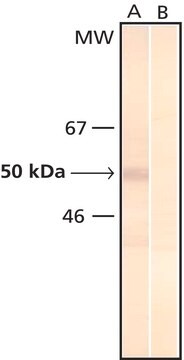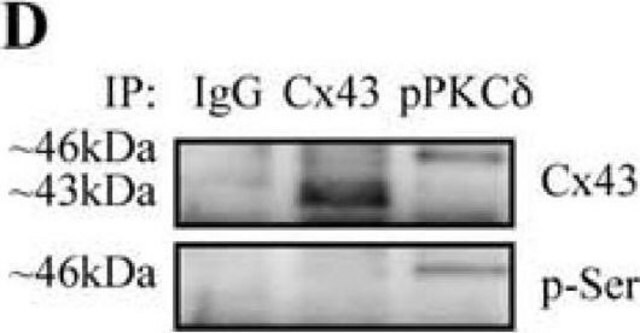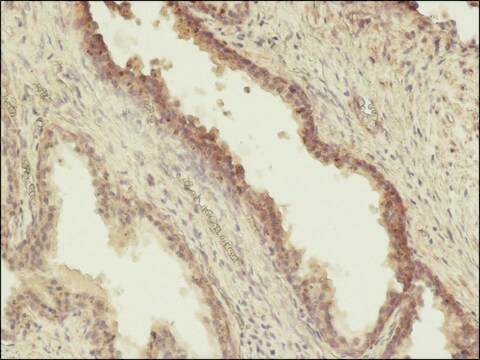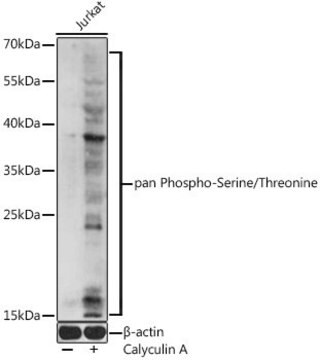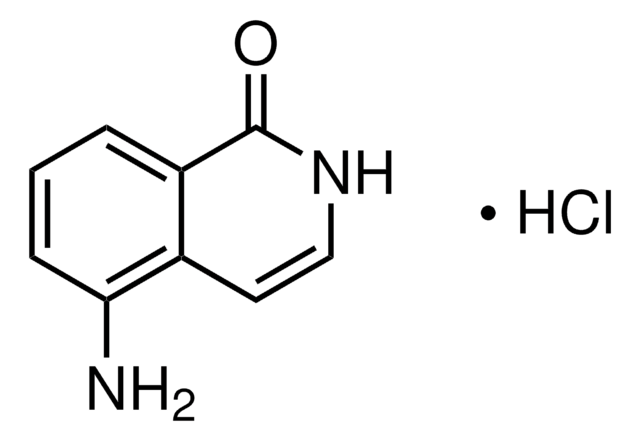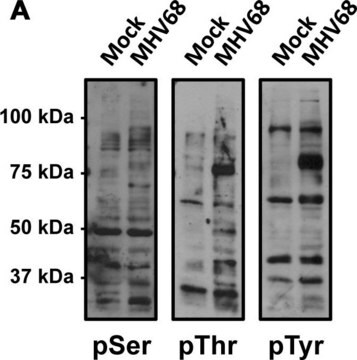A8076
Monoclonal Anti-Phosphoserine−Agarose antibody produced in mouse
clone PSR-45, purified from hybridoma cell culture, buffered aqueous solution
Synonym(s):
Monoclonal Anti-Phosphoserine, Phospho Ser, Phospho serine, Phospho−Ser, Phospho−serine
About This Item
Recommended Products
biological source
mouse
Quality Level
conjugate
agarose conjugate
antibody form
purified from hybridoma cell culture
antibody product type
primary antibodies
clone
PSR-45, monoclonal
form
buffered aqueous solution
technique(s)
immunoprecipitation (IP): suitable
isotype
IgG1
shipped in
wet ice
storage temp.
2-8°C
target post-translational modification
unmodified
Looking for similar products? Visit Product Comparison Guide
General description
Specificity
Immunogen
Application
Biochem/physiol Actions
Monoclonal Anti-Phosphoserine may be used for the identification of proteins containing phosphorylated serine both as the free amino acid or when conjugated to carriers such as BSA or KLH. It does not react with non-phosphorylated serine, phosphorylated tyrosine or threonine, AMP or ATP.
Physical form
Disclaimer
Not finding the right product?
Try our Product Selector Tool.
Storage Class Code
10 - Combustible liquids
WGK
WGK 3
Flash Point(F)
Not applicable
Flash Point(C)
Not applicable
Choose from one of the most recent versions:
Already Own This Product?
Find documentation for the products that you have recently purchased in the Document Library.
Articles
Post-translational modifications such as glycosylation, phosphorylation, and sulfation, to name a few, serve many functions. As a result, the analysis of proteins and their post-translational modifications is particularly important for the study of diseases where multiple genes are known to be involved, such as heart disease, cancer and diabetes.
Our team of scientists has experience in all areas of research including Life Science, Material Science, Chemical Synthesis, Chromatography, Analytical and many others.
Contact Technical Service